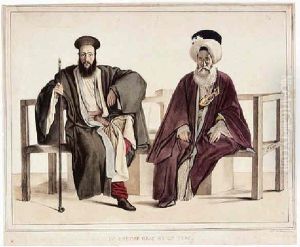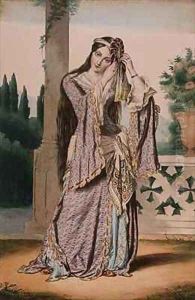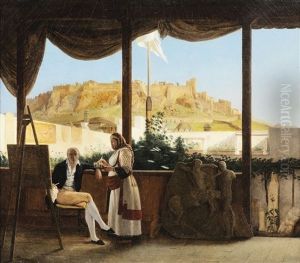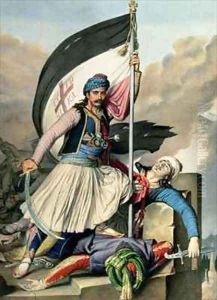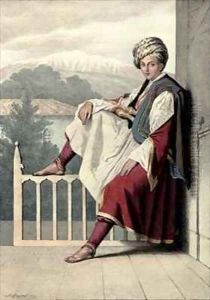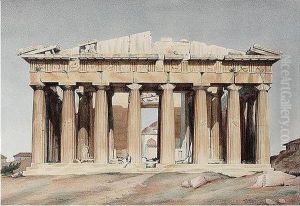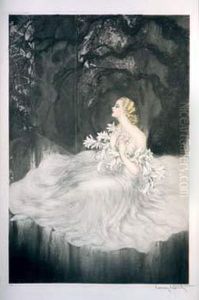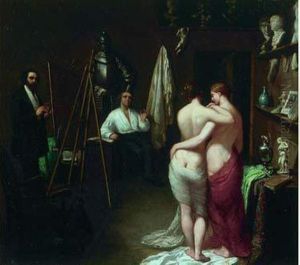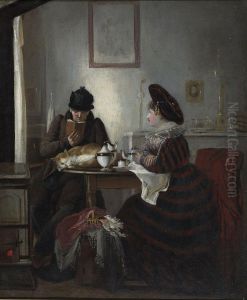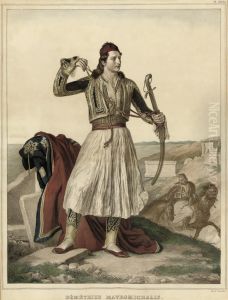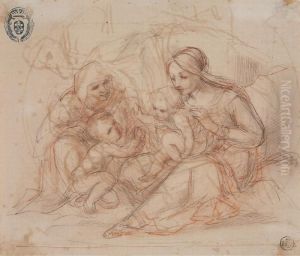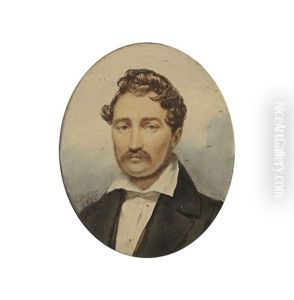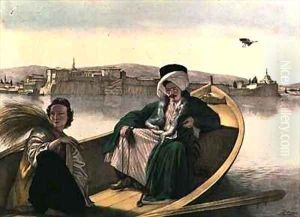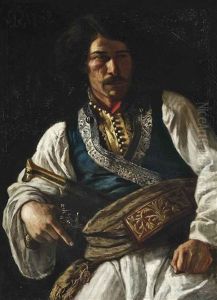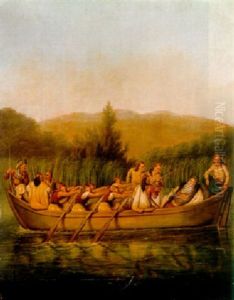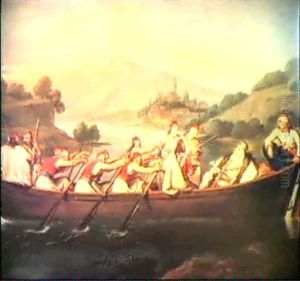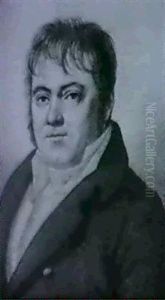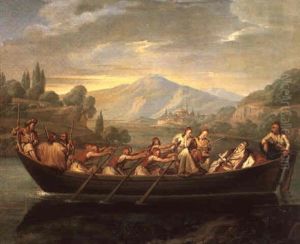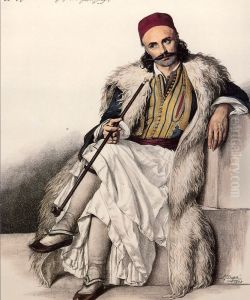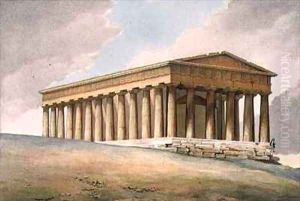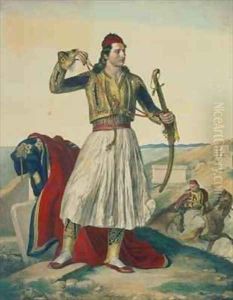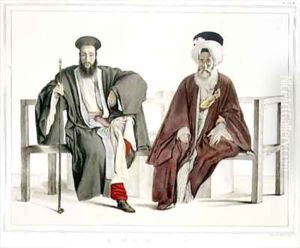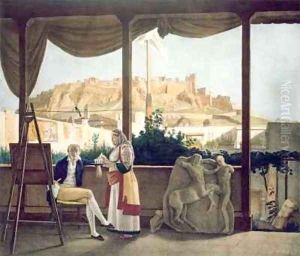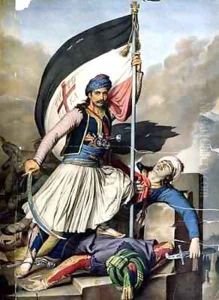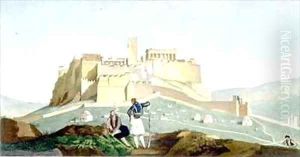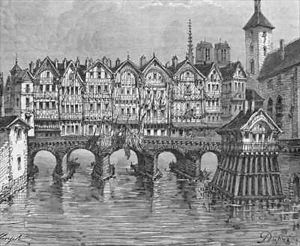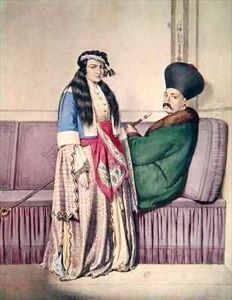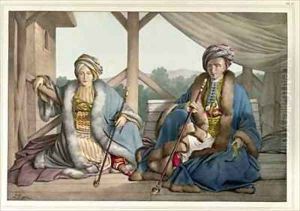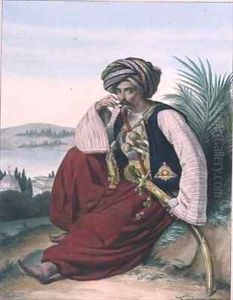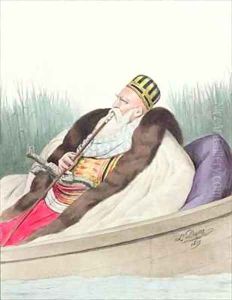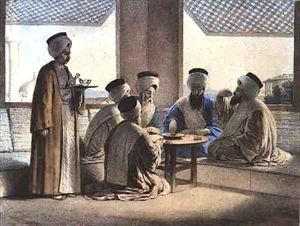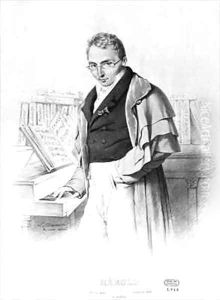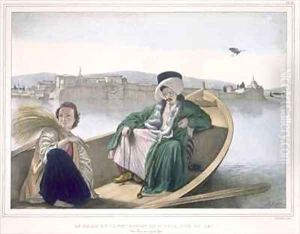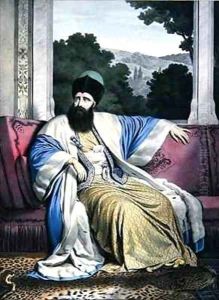Louis Dupre Paintings
Louis Dupré was a French painter, known primarily for his portraits and scenes depicting Orientalist themes. Born on December 18, 1789, in Versailles, France, Dupré developed an interest in art at an early age. He studied under renowned artists such as Jacques-Louis David, who was a prominent figure in the Neoclassical movement. Dupré's early works were influenced by his teacher, but he soon developed his own style, which was characterized by a keen attention to detail and a fascination with the exotic and the romantic.
During his career, Dupré traveled extensively, which greatly influenced his work. His travels took him to Greece and the Near East, including Turkey, where he was exposed to a variety of cultures and artistic traditions. This experience was reflected in his paintings, which often depicted scenes from his travels, such as bazaars, harems, and local customs. His work is noted for its vivid coloration and the liveliness of its subjects.
Dupré's Orientalist paintings were well-received in France, and he gained a reputation as an accomplished artist in this genre. He was part of the broader Orientalist movement in European art, wherein Western artists depicted aspects of Eastern cultures, often in a romanticized or exotic manner. Though today the movement is critiqued for its portrayal of Eastern cultures through a Western lens, Dupré's work remains significant for its artistic merit and as a historical reflection of his time.
Louis Dupré's contribution to French art was cut short by his untimely death on October 11, 1837. Despite his relatively short career, Dupré left behind a body of work that continues to be appreciated for its beauty and historical value. His paintings can be found in various museums and collections around the world, offering a window into the 19th-century fascination with the Orient and the skill of an artist who captured the allure of a world then little known to his contemporaries.

